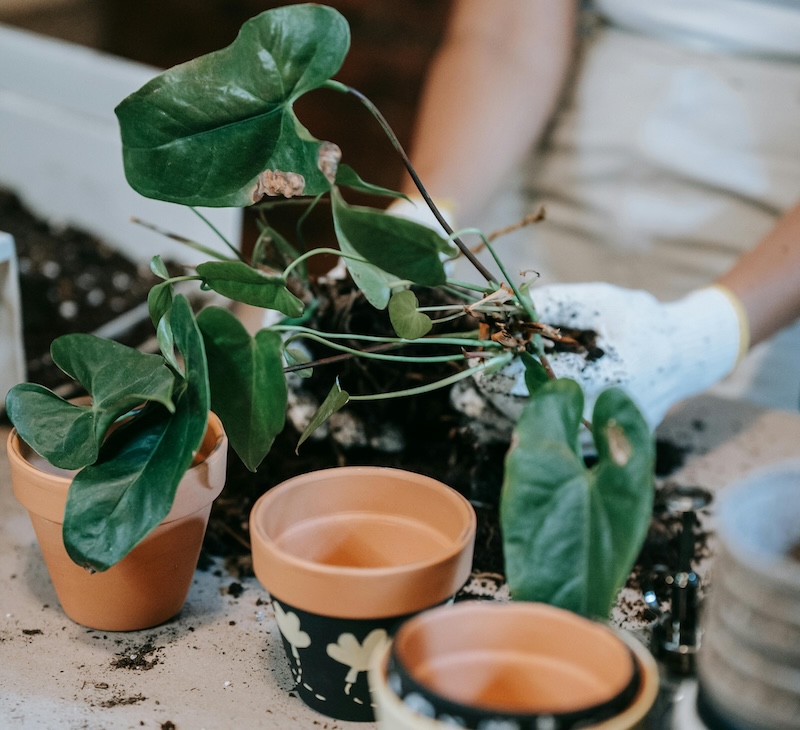At some point, every household can benefit from adding an Anthurium to their collection. When you bring the plant home, it will typically need to be repotted to give the roots more space. This is also a good time to move the plant into a more decorative planter. Down the road, your Anthurium will need to be repotted when it outgrows its current container and needs a larger pot. This happens about every two years. You might also move your Anthurium into a new container for purely aesthetic purposes, wanting a new look or color pot. There are many potential reasons you may want to repot your Anthurium into a new container.

Potting Anthurium
If you have chosen a new Anthurium from the nursery, congratulations! You have selected an amazing plant! Before you bring your plant home, make sure you have picked a healthy and thriving plant, free of disease and pests. Look out for yellowing or browning leaves, or any signs of pest residue and ask for assistance from nursery staff if you are unsure. Once you have chosen a happy, healthy plant, it is also a good time to choose a new container if you do not already have one in mind at home.
Carefully transport your plant home in a box, ensuring that the plant stays upright during transport. Once at home, it is a good idea to keep your new plant quarantined from your other houseplants for about a week or two. Keep your Anthurium in a location separate from your other houseplants, and monitor the plant for any new signs of pests or disease before you introduce it to the rest of your houseplants. Choose a spot that is not too hot or too cold, and not in direct sun to allow your Anthurium to recover from any transport shock or change in environment.

Repotting Anthurium
Your Anthurium will give you signs that it wants to be repotted. Common signs include roots circling around and around and surfacing above the soil, visible roots through the bottom drainage hole, a bursting or cracked container, and consistently wilted foliage. Depleted soil or soil that dries quickly is another sign that your Anthurium has outgrown its pot and wants to be repotted. Sometimes plants need to be repotted because the pot doesn’t have drainage holes or the right dimensions. Other times, you simply would like to change the container for aesthetic reasons.

Best Soil For Anthurium
Anthuriums have thick roots that do best in a chunky soil medium similar to orchid plants. Anthurium plants prefer a potting mix with good aeration and drainage. They also prefer soil rich in organic matter with a soil pH of 5.5-6.5. To mix your own soil for Anthurium, make a loose mixture of peat moss, perlite, and coarse bark. You could also mix a general potting soil with a cactus or orchid mix in equal parts. The brand Gardenera offers a specific Anthurium potting soil blend, if you would like to purchase a premade mix.
Anthurium Drainage
It is very important to make sure that your Anthurium container has adequate drainage. Anthurium plants prefer well-drained and aerated soil. If possible, choose a container with a drainage hole. Use a decorative saucer underneath the container to catch any drips or soil that might fall out of the hole. If your container does not have a drainage hole, you can use a drill to make your own hole. If it is not possible to make a drainage hole in your container, keep your Anthurium planted in a plastic nursery pot that can nest within the decorative container. When it is time to water the plant, remove the pot from the decorative container and place it in a sink or saucer to allow the water to drain while watering.
 |
Author Katie Endicott - Published 11-28-2023 |
